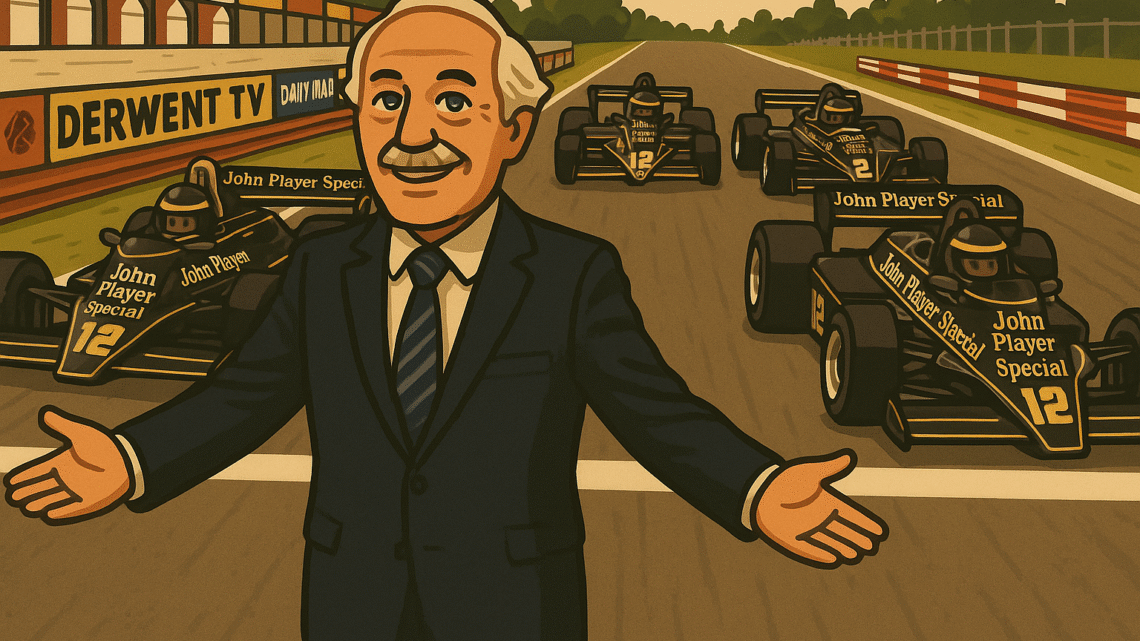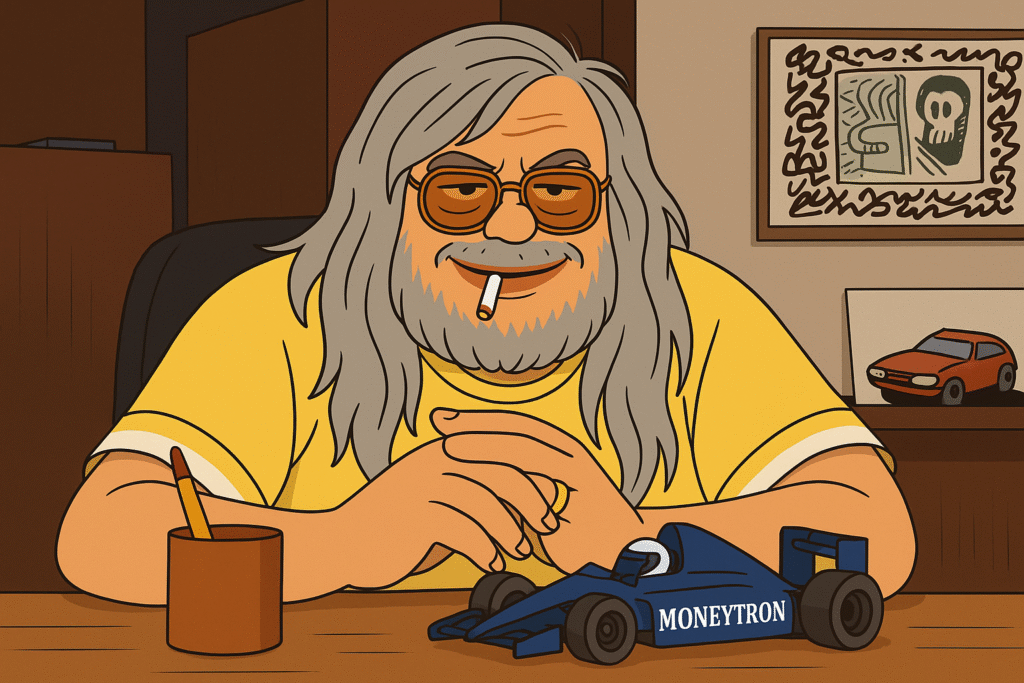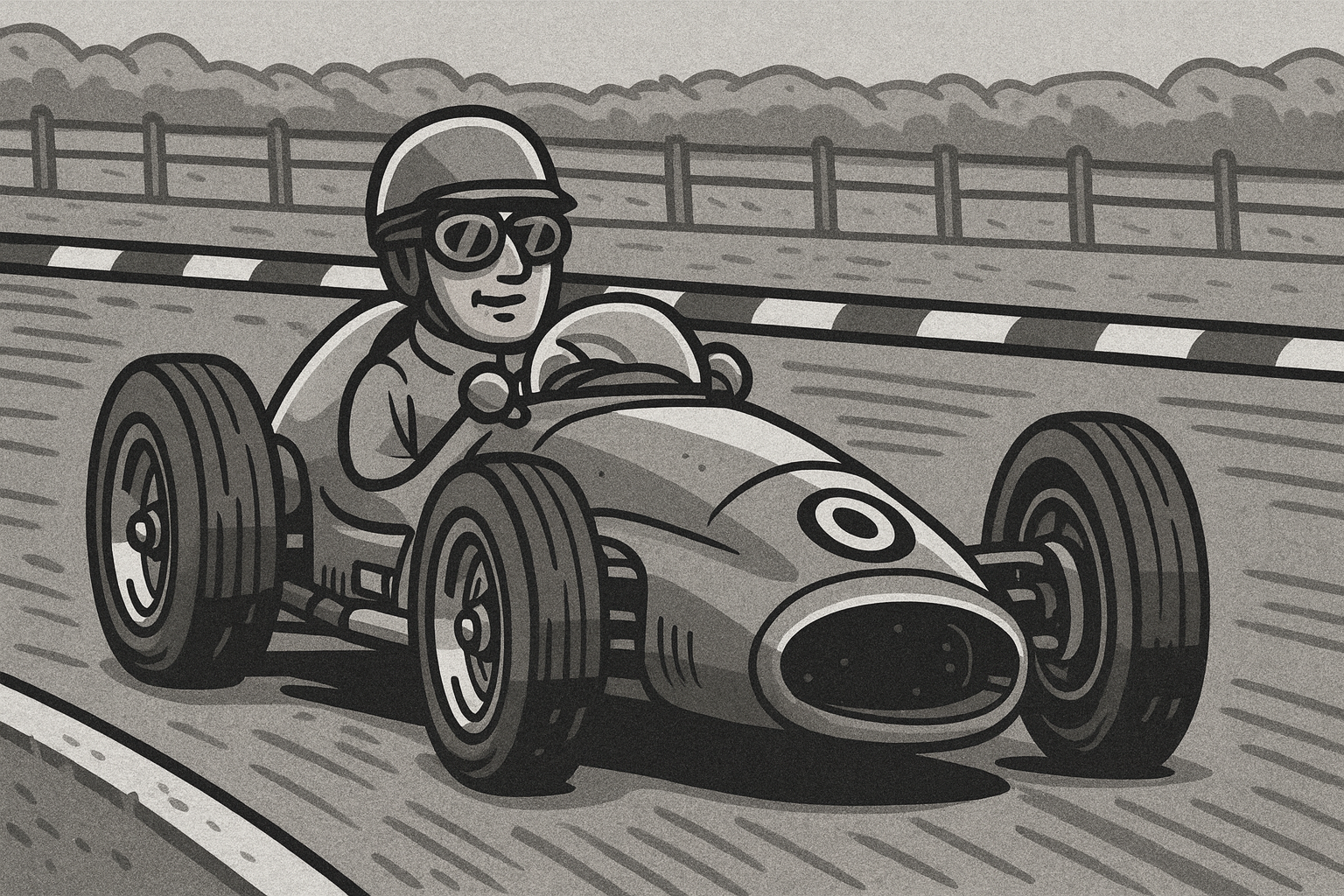
Colin Chapman: The Maverick Genius Who Revolutionized Formula 1
September 3, 2025In the high-octane world of Formula 1, few names resonate with the same revolutionary fervor as Colin Chapman. Born on May 19, 1928, in Richmond, London, this British engineering wizard transformed racing with his bold ideas and fearless innovation. As the founder of Lotus Cars and Team Lotus, Chapman didn’t just build cars—he redefined what was possible, turning a backyard dream into a motorsport dynasty. From pioneering the monocoque chassis to mentoring legends like Jim Clark, his legacy is etched in every sleek curve of an F1 machine. But Chapman’s story is also one of risk, controversy, and a mysterious end that still sparks debate. Let’s explore the life of this maverick, from his early tinkering to his lasting impact, with a few quirks thrown in along the way.
The Early Spark: From Student to Innovator
Colin Chapman’s journey began with a curious mind and a knack for problem-solving. Studying structural engineering at University College London, he was more interested in tweaking cars than textbooks. During World War II, he served in the Royal Air Force, where his exposure to aircraft design planted seeds for his later breakthroughs. By 1948, he was modifying an Austin 7 into the Lotus Mk1, a humble start that won local races and fueled his ambition.
In 1952, he founded Lotus Engineering with his wife, Hazel, operating out of a garage. The name “Lotus” came from his love of nature and a nod to the flower’s elegance—fitting for a man who saw beauty in mechanics. Early Lotus models, like the Mk6, gained traction in club racing, catching the eye of enthusiasts. Chapman’s philosophy was simple yet radical: lightweight design and innovative engineering could outsmart brute force. This ethos propelled him into Formula 1 by 1958 with the Lotus 12, marking the beginning of a legacy that would shake the sport.
Revolutionizing F1: The Lotus Legacy
Chapman’s impact on Formula 1 was seismic. The Lotus 25, introduced in 1962, was the first car to use a monocoque chassis—a lightweight, rigid structure that replaced the traditional spaceframe. Paired with the genius of Jim Clark, it dominated the 1963 season, securing both the Drivers’ and Constructors’ Championships. This wasn’t just a win; it was a paradigm shift, forcing rivals to rethink their designs.
The 1960s cemented Lotus as a powerhouse. The Lotus 49 (1967) used the engine as a stressed member, a groundbreaking concept that integrated power and structure. Clark’s 1965 and 1967 titles, plus Graham Hill’s 1968 triumph, showcased Chapman’s vision. His cars were aerodynamic marvels—think the Lotus 79’s ground-effect skirts in 1978, which Mario Andretti rode to the championship. Chapman’s mantra, “Simplify, then add lightness,” became a blueprint for modern F1, influencing teams like McLaren and Williams.
Off the track, he introduced sponsorship liveries, turning cars into moving billboards with colors like the iconic John Player Special black and gold. This commercial savvy helped Lotus thrive, but it also reflected his willingness to bend norms, a trait that later drew scrutiny.
The DeLorean Deal and Controversy
Chapman’s ambition extended beyond racing. In the late 1970s, he partnered with John DeLorean to create the DMC-12, a gull-winged sports car meant to rival Porsche. Using Lotus expertise, Chapman designed a lightweight frame, but the project spiraled into financial chaos. DeLorean’s 1982 arrest for drug trafficking to save his failing company cast a shadow over Chapman, with rumors swirling of his involvement—though never proven. Some speculated he used shady accounting to prop up Lotus, a claim that fueled conspiracy theories after his sudden death.
This era highlighted Chapman’s risk-taking nature. He borrowed heavily to fund Lotus, often living on the edge of bankruptcy. His DeLorean tie-in was less about cars and more about ego—a bid to prove his genius in the mainstream market. It ended in a tarnished reputation, but it also underscored his relentless drive to innovate, for better or worse.
Quirks and Personal Flair
Chapman wasn’t your typical engineer. He loved flying, often piloting his own planes to races, a hobby that added a dash of daring to his persona. Colleagues recalled his chaotic office, littered with sketches and half-built models, reflecting a mind that never stopped. He had a playful side too—once arriving at a test session in a clown costume to lighten the mood after a string of failures.
His relationship with drivers was a mix of mentorship and pressure. Jim Clark called him a “genius with a stopwatch,” while others noted his impatience with mediocrity. Chapman’s hands-on style saw him welding frames and debating designs late into the night, a stark contrast to today’s corporate team leaders. These quirks humanized a man whose brilliance sometimes overshadowed his personal touch.
The Mysterious End
Chapman’s life ended abruptly on December 16, 1982, at age 54, with a heart attack at his Norfolk home. The timing, amid the DeLorean fallout, sparked wild theories—some claimed he was poisoned or fled to Argentina, echoing tales of Elvis sightings. Official reports attribute it to natural causes, possibly exacerbated by stress and a demanding lifestyle. His death left Lotus reeling, and the company struggled without his vision, eventually sold to General Motors in 1986.
The mystery lingers because Chapman’s larger-than-life presence invites speculation. Was it a heart attack, or did his risky dealings catch up? The lack of an autopsy—due to family wishes—only fuels the debate. What’s certain is that his passing marked the end of an era, leaving a void in F1’s innovative spirit.
A Lasting Legacy
Colin Chapman’s influence endures. His lightweight designs shape every F1 car today, from aerodynamics to chassis construction. Lotus won seven Constructors’ Championships and six Drivers’ titles under his guidance, a record that stands as a testament to his genius. The DeLorean saga, while controversial, showcased his versatility, and his sponsorship model is now F1’s financial backbone.
Fans still swap stories of his clownish antics or plane trips, keeping his memory alive. In a sport now dominated by billion-dollar budgets and data analytics, Chapman’s DIY ethos feels like a relic of freer times. His legacy is a reminder that innovation often comes from outsiders willing to challenge the status quo, blending engineering brilliance with a touch of madness.
From a garage in London to the pinnacle of motorsport, Colin Chapman’s journey was a wild ride. Whether dodging conspiracy theories or designing winners, he left an indelible mark—a maverick whose ideas still race ahead.









